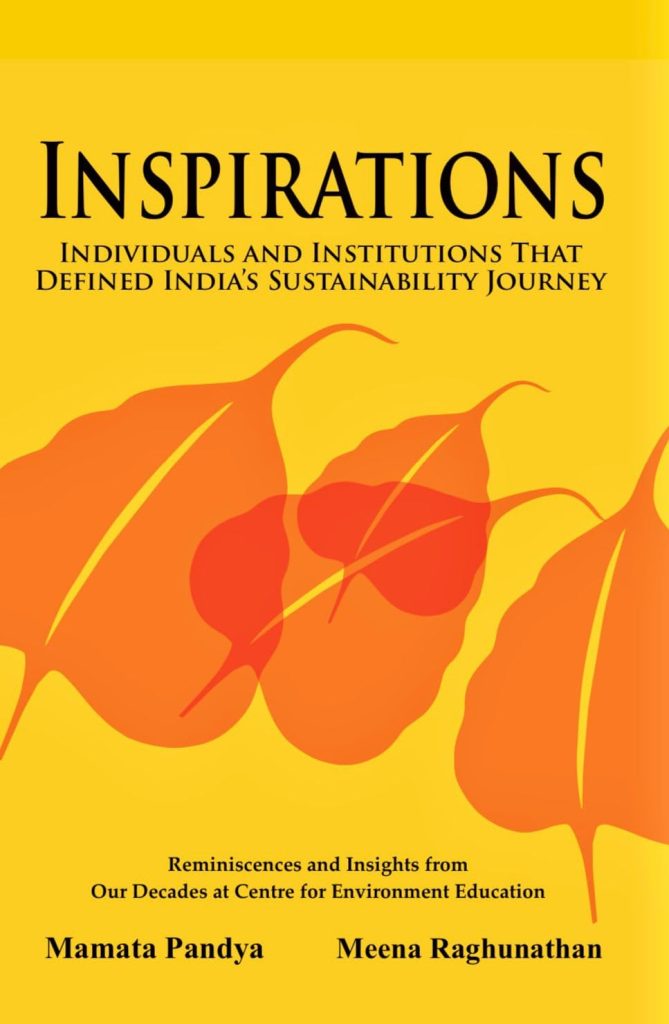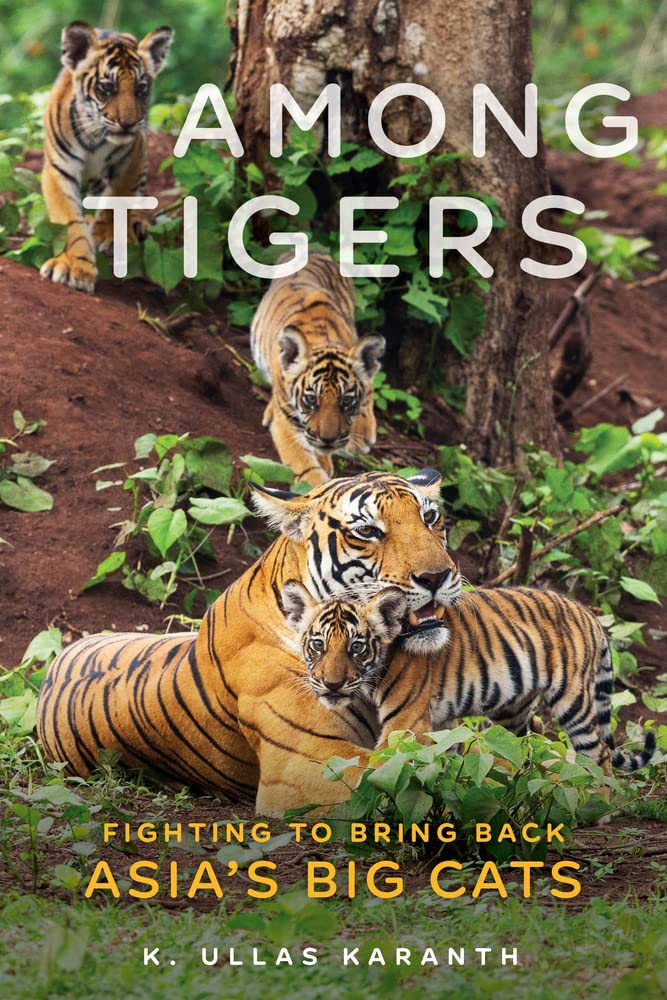Tropical coral reefs and mangroves are the world’s most productive ecosystems providing several economic and ecological benefits to humankind. Coastal and marine ecosystems also stabilise the coastline and act as a sink for land-based waste. As a result, most development activities are concentrated on the coastline with profound effects on the surrounding ecosystems. We have already lost more than a quarter of these valuable ecosystems to various natural and man-made stressors in the last fifty years. Reefs and mangroves of India are no exception. Unfortunately, there is little scientific information to inform resource managers on the best management practices that can halt, if not reverse, the current extent of degradation of these two very critical coastal ecosystems of India.
Despite a glowing legacy of research on coastal and marine ecosystems that includes the first international coral reef symposium, held in January 1969 at Rameswaram, marine biological research in India is yet to evolve beyond describing patterns and conducting status surveys. This has come at the cost of understanding the underlying processes and mechanisms of ecosystem functioning, knowledge that is critical to manage and conserve our marine resources.
In 2008, the Ministry of Environment and Forests (India) in collaboration with the Mangroves for the Future (MFF) initiative, IUCN India, organised a series of national workshops. Representatives from various government and non-government organisations, institutions and departments gathered at the workshop to brainstorm about the current status of coral reefs and mangrove ecosystems in India, to understand the threats they face and to identify ways to conserve and sustainably utilise them. These workshops aimed to shape the future for coastal and marine conservation interventions in India and culminated in two edited books:
- Bhatt Bhatt, DJ Macintosh, TS Nayar, CN Pandey and BP Nilaratna (Editors). 2011. Towards Conservation and Management of Mangrove Ecosystems in India. IUCN India.
- Bhatt JR, JK Patterson Edward, DJ Macintosh and BP Nilaratna (Editors). 2012. Coral reefs in India- Status, threats and conservation measures. IUCN India.
In TOWARDS CONSERVATION AND MANAGEMENT OF MANGROVE ECOSYSTEMS IN INDIA, the opening chapter by Kathiresan and Bhatt provides an introduction to mangrove ecosystems of India, their distribution, land cover, floral and faunal biodiversity and livelihood services. The chapter also outlines major knowledge gaps which need to be addressed for their conservation and management. The chapters that follow provide more detailed site-specific information on the floral and faunal diversity of mangroves, their current status, and past and ongoing conservation interventions covering the mainland states of Tamil Nadu, Kerala, Karnataka, Andhra Pradesh, Gujarat and the Sundarbans from West Bengal. In addition, there is a chapter on the poorly studied and understood mangrove ecosystems of the Andaman and Nicobar Islands. Various chapters in the book provide useful information on repositories and resources, both online and printed, that will be of immense use to researchers, resource managers and any lay person interested in learning more about the mangroves of India.
A chapter on the potential impacts of climate change on the coastal and marine ecosystems of India reviews the potential ecological and economic costs of sea level rise on coastal and marine ecosystems. Nayak highlights the need for an integrated approach to managing our coastline, stressing the value of remote sensing techniques in achieving this. This essay sets the context for Bahuguna’s chapter which provides a detailed review of the applications of remote sensing in developing a sound Integrated Coastal Zone Management (ICZM) plan for the coastline of India. A chapter by Ramesh and Purvaja provides a succinct summary of the core philosophy and approach underlying an integrated management approach of the coasts by highlighting the lack of trained and motivated people to practice the ICZM approach.
In a comprehensive review of the Coastal Regulation Zone (CRZ) Notification 1991, Ramesh et al. provide interesting insights into the history and evolution of the notification over two decades. They also provide a clear account of the formulation of the Island Protection Zone Notification of 2011. The final section on existing legal instruments for mangrove conservation and management will be a useful read for any one engaged in coastal and marine resource management.
Two chapters that share experiences of mangrove conservation efforts, both from Gujarat, provide useful insights on factors that ensure the success and failure of conservation projects. Both chapters highlight the need for a community based approach to mangrove management efforts in the region.
Pandey’s final chapter provides recommendations that emerged from the brain-storming sessions and discussions of the workshop. About 21 detailed recommendations highlight the need for research on biological and ecological aspects, social-economic aspects and policy and governance mechanisms. The recommendations also stress the need for capacity development, including communities in conservation and restoration efforts, documenting traditional knowledge, improving institutional linkages and creating databases and knowledge repositories.

Edited by JR Bhatt, JK Patterson Edward, DJ Macintosh & BP Nilaratna.
ISBN: 978-2-8317-1262-8
IUCN India. 2012.
Similar to the earlier book, this book is also a compilation of various presentations made at a workshop held in late December 2008 at the Suganthi Devadason Marine Research Institute (SDMRI), Tuticorin, Tamil Nadu. Twenty six select papers presented at the workshop that fall into four broad thematic categories namely (1) Coral Status and Conservation (2) Coral Associates (3) Reproduction, recruitment and restoration and (4) Coral environment and threats, are presented in detail. With an adequate coverage of a range of issues and themes, this book is a welcome appraisal of the current status of coral reefs in India, the threats they face and ongoing conservation initiatives. There is a strong skew towards work from the Gulf of Mannar region with little information on ongoing research initiatives from the far more critical coral reefs of the Lakshadweep and the Andaman and Nicobar Islands.
This indicates the need to initiate and support more research from the island ecosystems of India and to involve more institutions and organisations involved in coral reef research in these regions.
The introductory chapter by Bhatt et al. sets the right context for the book by providing information on the status and trends of Indian coral reefs, the threats and stresses they are subject to, ongoing management efforts and recommendations for better management of coral reefs in India. The three chapters that follow provide more locationspecific information on the status of coral reefs from various sites including the Gulf of Mannar, Lakshadweep, Gulf of Kutch and the Andaman and Nicobar Islands. A study on the recruitment of corals in the reefs of the Gulf of Kutch is a useful attempt to understand the often overlooked demographic processes that underlie coral reef dynamics. The next chapter by Padmakumar and Chandran reviews the biodiversity of octocorals of India providing an excellent resource for interested students and researchers. Melkani then reviews the success of the Eco-Development Committees (EDCs) and women Self Help Groups (SHGs) set up by the Gulf of Mannar Biosphere Reserve Trust as part of its sustainable marine resource use programme, which has important lessons for management practitioners.
The section on coral associates begin with reviews of reef associated ecosystems including mangroves and seagrass ecosystems focusing on their current status and conservation needs. Other chapters in this section examine crustacean and marine ornamental fish resources of the Gulf of Mannar, and giant clams of the Lakshadweep Islands. Rao provides an overview of reef fish diversity in the Andaman and Nicobar Islands, with records of 720 species of reef associated fishes belonging to 90 families. Shanker et al. reconstruct the evolution of research and conservation initiatives of marine turtles in India, including a summary of threats. Two chapters dealing with single species conservation follow; the first deals with a status survey of dugongs in the Andaman and Nicobar Islands and the other deals with a community based whale shark conservation project in Gujarat.
The following section has the only chapter that deals specifically with coral reef related processes by Diraviyaraj and Patterson which provides a detailed summary of the reproductive and recruitment patterns of corals from the Gulf of Mannar. This clearly highlights a fundamental problem with Indian marine biological research—a conspicuous absence of process based studies.
A section on threats to coral reefs begins with the often overlooked issue of coral diseases. Ravindran and Raghukumar’s review identifies coral disease as a potential structuring force of future reefs of India. This prediction is supported by Thinesh and Edward’s study that reveals an alarming loss of live coral cover due to diseases in the Palk Bay and the Gulf of Mannar.
The final chapters review the important natural and anthropogenic threats to coral reefs, including climate change, and their impacts on the Marine National Park in the region, identifying lack of local awareness, capacity and alternate livelihood options as the main impediment to their successful management. The closing chapter by Edward and Bhatt notes the biological invasion of the coral reefs of the Gulf of Mannar and Palk Bay, an issue that has the potential to become one of the most serious threats in coming years.
Both books are landmark publications with contributions by some of the leading coastal and marine biologists and resource managers in India, providing concise syntheses of past and ongoing research and conservation initiatives in India including the islands of Lakshadweep and the Andaman and Nicobar. The books provide up-todate information on the current status of these ecosystems, a critical assessment of existing legal frameworks and also a series of recommendations that are aimed at addressing current concerns and issues surrounding the management of coastal and marine resources in India.





